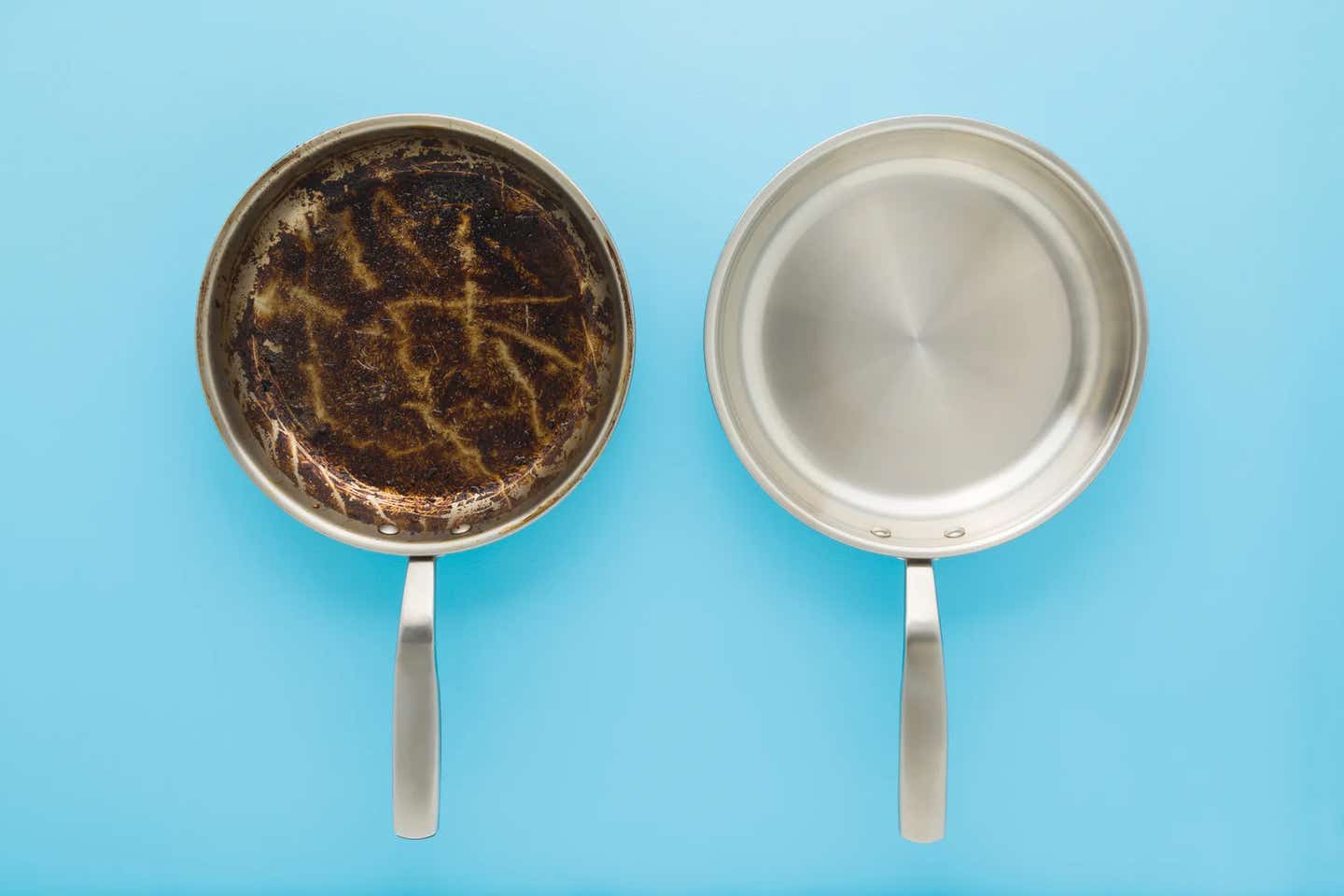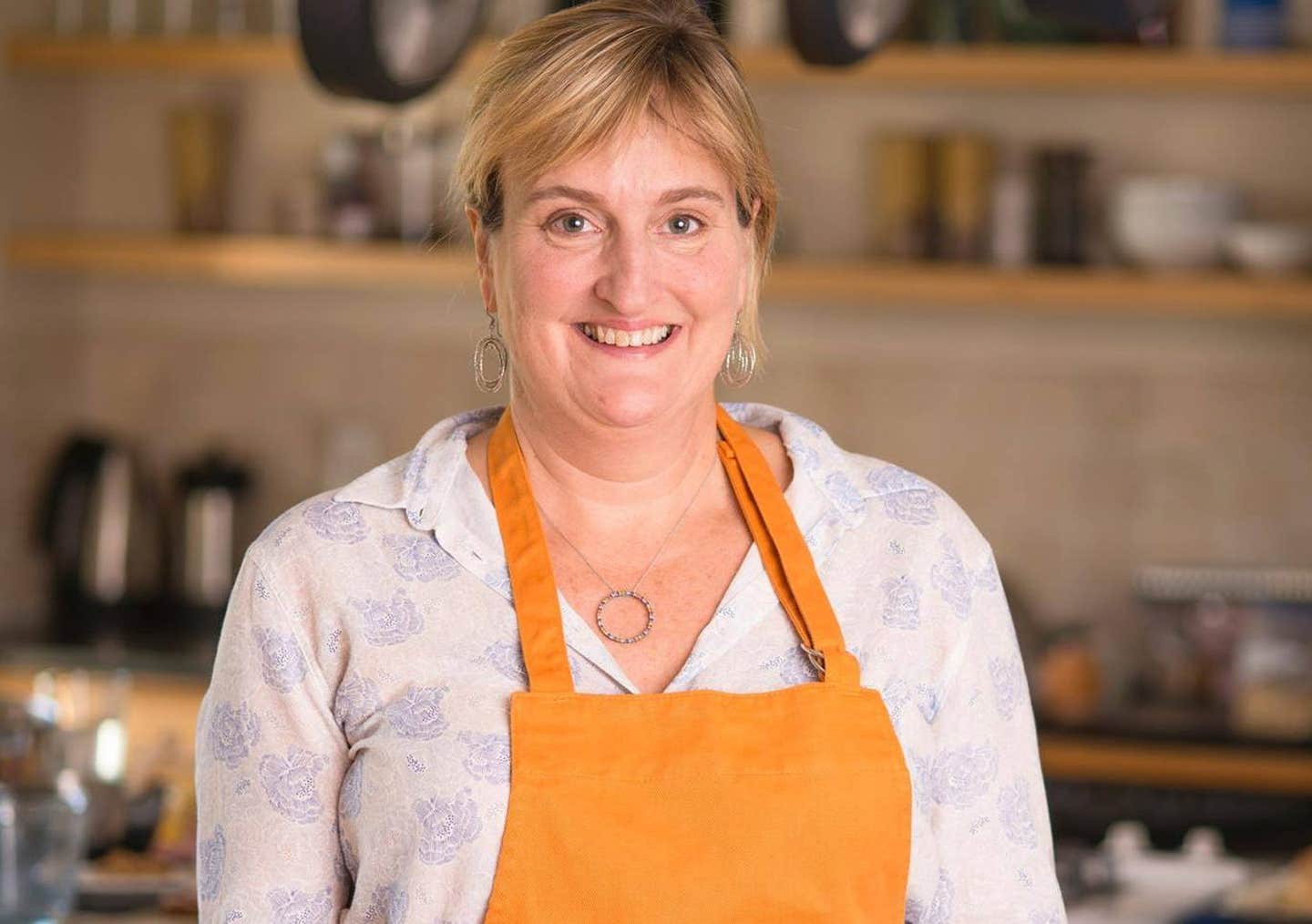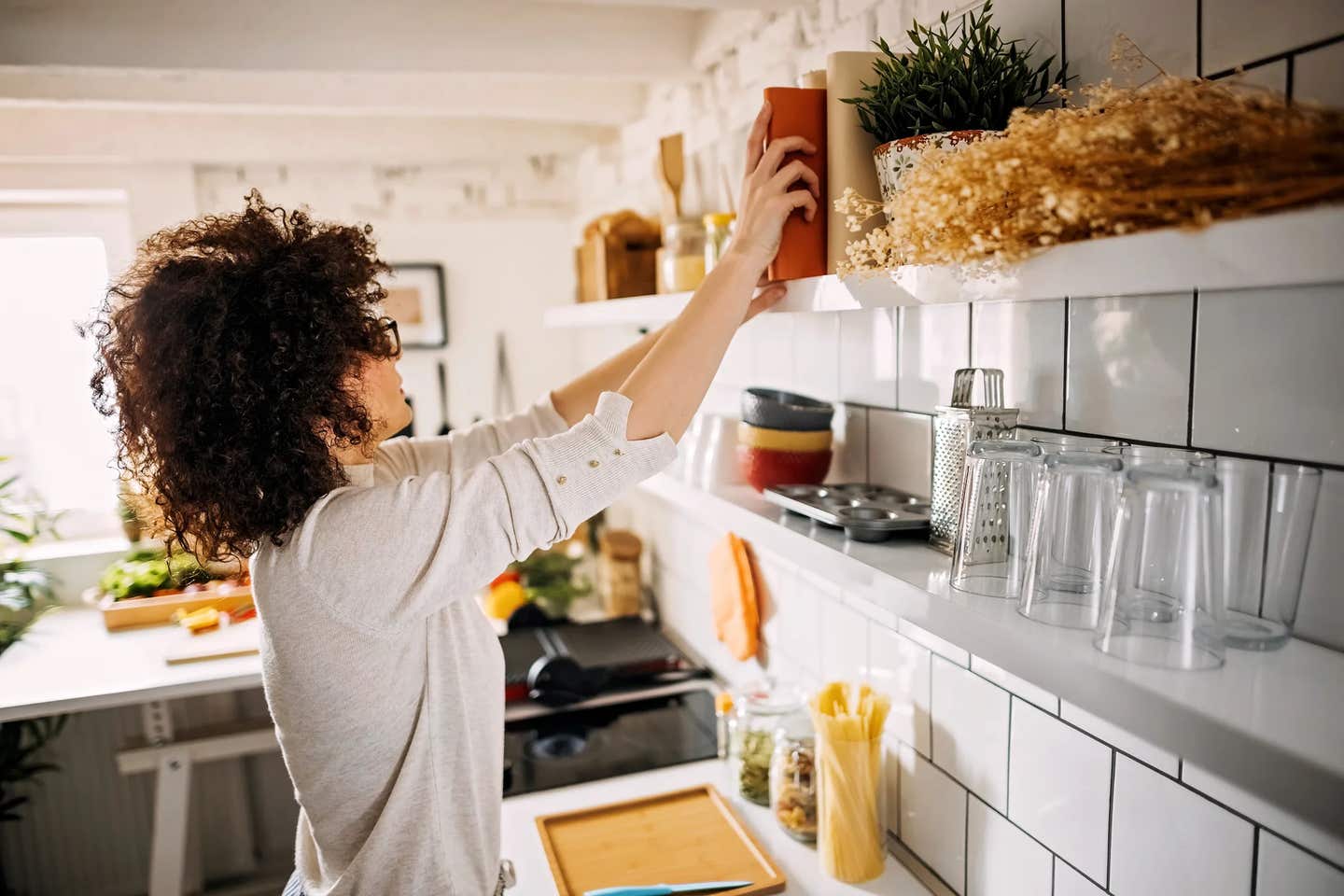
The Cooking Hack That Makes Stainless Steel Pans Work Like Nonstick
- Stainless steel pans can become naturally nonstick—no oil needed—when properly preheated.
- The water-drop, or mercury-ball, test helps you find the perfect temperature for oil-free cooking.
- When a drop of water beads up and glides smoothly around the pan, the pan is ready to use.
Ask any chef or home cook who uses stainless steel pans, and they’ll tell you they wouldn’t sauté, sear, braise, or stir-fry with anything else. The versatile, practically indestructible cookware distributes heat evenly and stands up to high temperatures that can cause nonstick coatings to break down and other metals to warp. The one drawback to stainless steel is that foods can really stick when the pan hasn’t been preheated properly, especially when cooking with little or no oil.
Enter the water-drop test. This quick, science-based trick is a reliable method for turning stainless steel into a nonstick surface—even without the addition of oil—by ensuring it’s been preheated to just the right temperature. Read on to learn why it works, and watch our video to see how a single drop of water can tell you if your pan is too cold, too hot, or just right.
What Is the Water-Drop Test?
The water-drop test—also called the mercury-ball test or the Leidenfrost test—is a quick and easy way to check that a stainless-steel pan is hot enough to start cooking. It is based on the Leidenfrost effect, a physics principle named after 18th century German scientist Johann Gottlob Leidenfrost. He discovered that when a drop of water comes into contact with a surface that is hotter than boiling, the water instantly creates a thin layer of steam that insulates it from the heat. Instead of sizzling away, the water drop holds its shape and glides around the hot surface like a mercury ball for several seconds before it evaporates.
In the kitchen, the water-drop test is more than just a physics phenomenon. It is a foolproof indication of the temperature where stainless steel becomes a nonstick surface.
How It Works
When a stainless steel skillet reaches the range where the water drop test works—roughly between 370°F and 450˚F, though estimates vary—two things happen. First, the high heat causes the metal to expand, smoothing out any microscopic nooks and crannies where food can stick. Second, conditions are primed for the Leidenfrost effect to act on the moisture in foods, giving them a vapor cushion that helps them glide around the surface of the pan instead of sticking.
Using the Water-Drop Test for Oil-Free Sautéing
The great thing about the water-drop test is you don’t need to be a scientist, chef, or TikToker (the method hit the big time on social media a couple of years ago) to pull it off. Here’s how it’s done for no-oil sautéing.
- Preheat a stainless steel skillet over medium or medium-high heat (depending on your stove) for about 2 minutes. Have a glass of cold water and a ¼-teaspoon measuring spoon at the ready.
- Add ¼ teaspoon of cold water to the pan. If the water sizzles and evaporates, then the pan’s temperature is over the boiling point but not hot enough to make the metal a nonstick surface.
- When the ¼-teaspoon drop added to the pan beads up into a single ball—or briefly splits into smaller droplets before quickly merging back together—and then glides around the pan, you’ve hit the Leidenfrost effect sweet spot. The stainless steel has expanded and turned into a smooth, nonstick surface, and you’re ready to cook. (Note: If the water separates into many small droplets that skitter around the pan instead of cohering into one large, gliding droplet, the pan is too hot. Reduce heat slightly, let it cool down several seconds, then test again.)
- Add the ingredients immediately, being careful not to overcrowd the pan. (Too much food can lower the temperature and cause sticking.) Stir and reduce the heat a bit if necessary: The pan shouldn’t smoke, and the ingredients should soften and sizzle, not crisp and scorch.
- Once the ingredients begin to soften or brown (depending on what the recipe calls for), add a splash of water or broth, and continue sautéing with the liquid until the food is cooked to your liking. Enjoy!
About the Author

About the Author
Mary Margaret Chappell
Join our mailing list
Get free recipes and the latest info on living a happy, healthy plant-based lifestyle.
By providing your email address, you consent to receive newsletter emails from Forks Over Knives. We value your privacy and will keep your email address safe. You may unsubscribe from our emails at any time.
